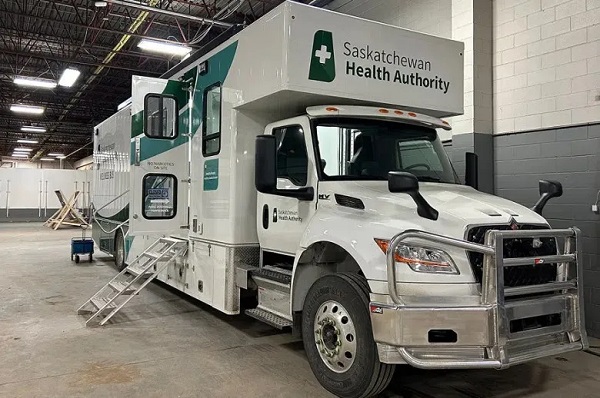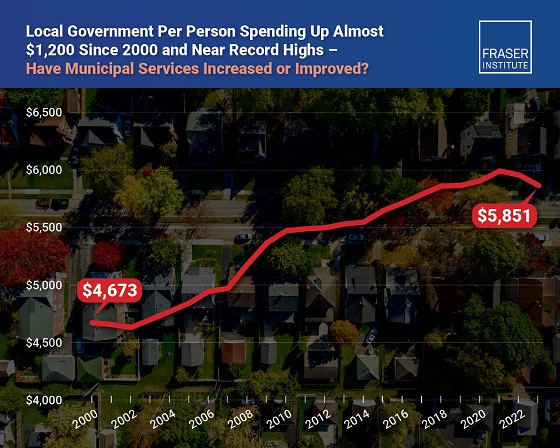Addictions
Illicit drug use still tolerated in some B.C. hospital rooms, says recent patient

Illustration courtesy of Midjourney
News release from Break The Needle
Vancouverite Mark Budworth says he was exposed to illicit drug smoke while recovering from an ankle replacement at St. Paul’s Hospital.
Two months ago, nurses across British Columbia said that the provincial government had allowed addicts to openly smoke illicit drugs, such as fentanyl and meth, in hospital rooms to the detriment of frontline workers and other patients. The province subsequently committed to banning the practice – but testimony from a recently hospitalized patient suggests that, at least in some hospitals, this crackdown may not have been serious.
Mark Budworth is a semi-retired Vancouverite in his early 60s who received a full ankle replacement at St. Paul’s Hospital, one of the province’s preeminent medical institutions, in mid-May. In a recent phone interview, he told Break The Needle that, during his four day stay, he was exposed to illicit drug use that was tolerated by staff and made him feel unsafe.
Though only one story, his account fits into a broader picture of rampant fentanyl trafficking and public disorder that has been bleeding into the province’s healthcare system, all to the seeming indifference of provincial officials.
The problems allegedly began after his surgery when he was wheeled into his hospital room, which was shared with another patient who seemed around 30 years old. “There was a strong smell of smoke. And it didn’t smell like tobacco smoke. It smelled like drugs,” said Budworth, who claimed that the hospital porters transporting him commented on the smell but were largely indifferent to it. To his knowledge, no attempts were made by staff to do anything about the apparent illicit drug use.
The next day, Budworth had a friend visit him. He said that the hospital roommate introduced himself to them and was in a “euphoric” and “confused” state, which made them uncomfortable and led the friend to later speculate that the roommate may have been high on meth. After the friend departed, the roommate allegedly left the room and, upon returning, told Budworth that he had bought $200 of fentanyl.
Subscribe to our newsletter to get our latest news and analysis –
or donate to our investigative journalism fund.
Budworth said that, around midnight that night, he awoke and realized that his roommate, who sounded very intoxicated, was in the middle of an “aggressive” conversation with a female visitor, which sounded “a little scary.” He said the smell of illicit drug smoke lingered in the air and that he called the nurses who, in turn, summoned security guards. As the woman was being removed, security told her to pull her pants up from around her knees, he said.
The alleged incident left Budworth feeling unsafe, as he worried that he might face retaliation from his roommate. The hospital’s nurses refused to relocate him to a new room at first, but eventually relented after he persistently emphasized his safety concerns, he said.
In his second room, his new roommate was a homeless man who would often leave to smoke cigarettes and marijuana, he said. This new roommate allegedly told Budworth that the hospital’s fourth floor rooftop courtyard is an open drug market where people regularly fight and smoke fentanyl.
Budworth said that, throughout the rest of his stay, he spoke with several hospital staff and, though they were “wonderful,” his conversations with them suggested that illicit drug use was tolerated in the building. “The staff didn’t seem to think it was a big deal. It was normal,” he said.
He claimed to have spoken with four nurses, some of whom suggested that illicit drug use among patients was making their jobs difficult. “They’re people dealing with unlimited problems with limited resources,” he said.
After Budworth was discharged from the hospital, he wrote a letter to Health Minister Adrian Dix explaining his concerns, which he then forwarded to Break The Needle. “I’ve read a lot of articles about the nurses complaining. I hadn’t yet read an article about a patient complaining – patients’ experience. And that’s why I thought I should go on record,” he explained over the phone.
The conditions Budworth recalled at St. Paul’s were largely consistent with what was described in a news report published by Glacier Media Group in early April, before the province cracked down on open drug use in hospitals. In that report, a nurse who worked at the hospital told journalist Rob Shaw, “You can barely walk into some of the rooms, there’s needles and broken crack pipes and dirty food all over the floor.”
“Absolutely there are people throughout that hospital who are dealing and using everywhere,” said the nurse at the time. “We know they are drug dealers, and yet they come and go.”
Budworth’s testimony raises concerns about whether the provincial government’s attempts to control illicit drug use in hospitals have, at least in some instances, been unsuccessful.
In an emailed response sent to Break The Needle on May 30, a media representative of St. Paul’s stated that illicit drug use is not permitted anywhere in the hospital, except for an outdoor overdose prevention site (OPS) on the rooftop courtyard, which she said had received approximately 600 unique visits in the preceding two weeks.
The representative wrote that drug trafficking has “never been permitted” anywhere at the hospital, including the OPS. “Security has increased at our sites to support clinical teams as they respond to problematic behaviours, aggression, drug use, and illicit drug dealing in hospitals.”
But apparently those policies neither protected Budworth nor safeguarded his right to a dignified hospital stay free from illicit drugs and intimidating behaviour.
He blamed the province’s failed drug decriminalization experiment, which was recently scaled back by the BC NDP, and said that the decriminalization movement made him feel “uncomfortable” because, “We’re seeing people smoking fentanyl on the streets already… which is easy to walk away from when you’re mobile, but when you’re in a hospital bed and it’s happening in your room, it’s a little too close.”
“I was gonna vote NDP. I think the provincial government’s pretty good, but, with this experience, they lost my vote on this one… I don’t think that our current government and Victoria is really considering all the stakeholders on this issue,” he said.
[This article has been co-published with The Bureau, a Canadian media outlet that tackles corruption and foreign influence campaigns through investigative journalism. Subscribe to their work to get the latest updates on how organized crime influences the Canadian drug trade.]
Break The Needle.
Our content is always free – but if you want to help us commission more high-quality journalism, consider getting a voluntary paid subscription.
Addictions
New RCMP program steering opioid addicted towards treatment and recovery

News release from Alberta RCMP
Virtual Opioid Dependency Program serves vulnerable population in Red Deer
Since April 2024, your Alberta RCMP’s Community Safety and Well-being Branch (CSWB) has been piloting the Virtual Opioid Dependency Program (VODP) program in Red Deer to assist those facing opioid dependency with initial-stage intervention services. VODP is a collaboration with the Government of Alberta, Recovery Alberta, and the Alberta RCMP, and was created to help address opioid addiction across the province.
Red Deer’s VODP consists of two teams, each consisting of a police officer and a paramedic. These teams cover the communities of Red Deer, Innisfail, Blackfalds and Sylvan Lake. The goal of the program is to have frontline points of contact that can assist opioid users by getting them access to treatment, counselling, and life-saving medication.
The Alberta RCMP’s role in VODP:
- Conducting outreach in the community, on foot, by vehicle, and even UTV, and interacting with vulnerable persons and talking with them about treatment options and making VODP referrals.
- Attending calls for service in which opioid use may be a factor, such as drug poisonings, open drug use in public, social diversion calls, etc.
- Administering medication such as Suboxone and Sublocade to opioid users who are arrested and lodged in RCMP cells and voluntarily wish to participate in VODP; these medications help with withdrawal symptoms and are the primary method for treating opioid addiction. Individuals may be provided ongoing treatment while in police custody or incarceration.
- Collaborating with agencies in the treatment and addiction space to work together on client care. Red Deer’s VODP chairs a quarterly Vulnerable Populations Working Group meeting consisting of a number of local stakeholders who come together to address both client and community needs.
While accountability for criminal actions is necessary, the Alberta RCMP recognizes that opioid addiction is part of larger social and health issues that require long-term supports. Often people facing addictions are among offenders who land in a cycle of criminality. As first responders, our officers are frequently in contact with these individuals. We are ideally placed to help connect those individuals with the VODP. The Alberta RCMP helps those individuals who wish to participate in the VODP by ensuring that they have access to necessary resources and receive the medical care they need, even while they are in police custody.
Since its start, the Red Deer program has made nearly 2,500 referrals and touchpoints with individuals, discussing VODP participation and treatment options. Some successes of the program include:
- In October 2024, Red Deer VODP assessed a 35-year-old male who was arrested and in police custody. The individual was put in contact with medical care and was prescribed and administered Suboxone. The team members did not have any contact with the male again until April 2025 when the individual visited the detachment to thank the team for treating him with care and dignity while in cells, and for getting him access to treatment. The individual stated he had been sober since, saying the treatment saved his life.
- In May 2025, the VODP team worked with a 14-year-old female who was arrested on warrants and lodged in RCMP cells. She had run away from home and was located downtown using opioids. The team spoke to the girl about treatment, was referred to VODP, and was administered Sublocade to treat her addiction. During follow-up, the team received positive feedback from both the family and the attending care providers.
The VODP provides same-day medication starts, opioid treatment transition services, and ongoing opioid dependency care to people anywhere in Alberta who are living with opioid addiction. Visit vodp.ca to learn more.
“This collaboration between Alberta’s Government, Recovery Alberta and the RCMP is a powerful example of how partnerships between health and public safety can change lives. The Virtual Opioid Dependency Program can be the first step in a person’s journey to recovery,” says Alberta’s Minister of Mental Health and Addiction Rick Wilson. “By connecting people to treatment when and where they need it most, we are helping build more paths to recovery and to a healthier Alberta.”
“Part of the Alberta RCMP’s CSWB mandate is the enhancement of public safety through community partnerships,” says Supt. Holly Glassford, Detachment Commander of Red Deer RCMP. “Through VODP, we are committed to building upon community partnerships with social and health agencies, so that we can increase accessibility to supports in our city and reduce crime in Red Deer. Together we are creating a stronger, safer Alberta.”
Addictions
Saskatchewan launches small fleet of wellness buses to expand addictions care

By Alexandra Keeler
Across Canada, mobile health models are increasingly being used to offer care to rural and underserved communities
Saskatchewan has launched a small fleet of mobile wellness buses to improve access to primary health care, mental health and addiction services in the province.
The first bus began operating in Regina on Feb. 12. Another followed in Prince Albert on March 21. Saskatoon’s bus was unveiled publicly on April 9. All three are former coach buses that have been retrofitted to provide health care to communities facing barriers to access.
“Mobile health units are proven to improve outcomes for people facing barriers to healthcare,” Kayla DeMong, the executive director of addiction treatment centre Prairie Harm Reduction, told Canadian Affairs in an email.
“We fully support this innovative approach and are excited to work alongside the health bus teams to ensure the people we support receive the care they need, when and where they need it.”
Wellness buses
Like all provinces, Saskatchewan has been grappling with the opioid crisis.
In 2023, an estimated 457 individuals died from overdoses in the province. In 2024, that number fell to 346. But the province continues to struggle with fatal and non-fatal overdoses.
In late February, Saskatoon firefighters responded to more than 25 overdoses in a single 24-hour period. Just over a week later, they responded to 37 overdoses within another 24-hour window.
Saskatchewan’s wellness buses are part of the province’s plan to address these problems. In April 2025, the province announced $2.4 million to purchase and retrofit three coach buses, plus $1.5 million in annual operating funds.
The buses operate on fixed schedules at designated locations around each city. Each bus is staffed with a nurse practitioner, nurse and assessor coordinator who offer services such as overdose reversal kits, addiction medicine and mental health referrals.
“By bringing services directly to where people are, the health buses foster safer, more welcoming spaces and help build trusting relationships between community members and care providers,” said DeMong, executive director of Prairie Harm Reduction.
Saskatoon-based Prairie Harm Reduction is one of the local organizations that partners with the buses to provide additional support services. Prairie Harm Reduction provides a range of family, youth and community supports, and also houses the province’s only fixed supervised consumption site.
The mobile model
Saskatchewan is not the only province using wellness buses. Across Canada, mobile health models are increasingly being used to expand access to care in rural and underserved communities.
In Kingston, Ont., the Street Health Centre operates a retrofitted RV called PORCH (Portable Outreach Care Hub) that serves individuals struggling with homelessness and addiction.
“Our outreach services are extremely popular with our clients and community partners,” Donna Glasspoole, manager at Street Health Centre, said in an emailed statement.
“PORCH hits the road two to three days/week and offers a variety of services, which are dependent on the health care providers and community partners aboard.”
Street Health Centre also has a shuttle service that picks up clients in shelters and brings them to medical clinics or addiction medicine clinics.
The PORCH vehicles are not supported by provincial funding, but instead rely on support from the United Way and other grants. Glasspoole says the centre’s permanent location — which does receive government funding — is more cost-effective to operate.
“The vehicles are expensive to operate and our RV is not great in winter months and requires indoor parking,” she said.

Politically palatable
Many mobile health models currently do not provide controversial services such as supervised drug consumption.
The Saskatchewan Health Authority told Canadian Affairs the province’s new wellness buses will not offer supervised consumption services or safer supply, where drug users are given prescribed opioids as an alternative to toxic street drugs.
“There are no plans to provide supervised consumption services from the wellness buses,” Saskatchewan Health Authority spokesperson Courtney Markewich told Canadian Affairs in a phone call.
This limited scope may make mobile services more politically palatable in provinces that have resisted harm reduction measures.
In Ontario, some harm reduction programs have shifted to mobile models following Premier Doug Ford’s decision to suspend supervised consumption services located within 200 metres of schools and daycares.
In April, Toronto Public Health ended operations at its Victoria Street fixed consumption site, replacing it with street outreach and mobile vans.
The Ontario government’s decision to close the sites is part of a broader pivot away from harm reduction. The province is investing $378 million to transition suspended sites into 19 new “HART Hubs” that offer primary care, mental health, addictions treatment and other supports.
Glasspoole says that what matters most is not whether services are provided at fixed or mobile locations, but how care is delivered.
Models that “reduce barriers to care, [are] non-judgemental, and [are staffed by] trauma-informed providers” are what lead more people toward treatment and recovery, she said in her email.
In Saskatchewan, DeMong hopes the province’s new wellness buses help address persistent service gaps and build trust with underserved communities.
“This initiative is a vital step toward filling long-standing gaps in the continuum of care by providing low-barrier, community-based access to health-care services,” she said.
This article was produced through the Breaking Needles Fellowship Program, which provided a grant to Canadian Affairs, a digital media outlet, to fund journalism exploring addiction and crime in Canada. Articles produced through the Fellowship are co-published by Break The Needle and Canadian Affairs.
Subscribe to Break The Needle
-

 Business1 day ago
Business1 day agoOttawa Funded the China Ferry Deal—Then Pretended to Oppose It
-

 COVID-192 days ago
COVID-192 days agoNew Peer-Reviewed Study Affirms COVID Vaccines Reduce Fertility
-

 MAiD1 day ago
MAiD1 day agoCanada’s euthanasia regime is not health care, but a death machine for the unwanted
-

 Business1 day ago
Business1 day agoWorld Economic Forum Aims to Repair Relations with Schwab
-

 Alberta1 day ago
Alberta1 day agoThe permanent CO2 storage site at the end of the Alberta Carbon Trunk Line is just getting started
-

 Alberta1 day ago
Alberta1 day agoAlberta’s government is investing $5 million to help launch the world’s first direct air capture centre at Innisfail
-

 Business1 day ago
Business1 day agoMunicipal government per-person spending in Canada hit near record levels
-

 Business1 day ago
Business1 day agoA new federal bureaucracy will not deliver the affordable housing Canadians need







